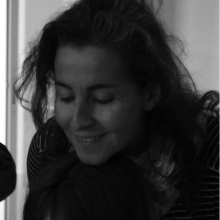SILC - Silent Constituents in the Grammar of Portuguese
Project Description
1. Aims and areas of study
Silent Constituents in the Grammar of Portuguese (SILC) was a project pursuing an integrated knowledge of Portuguese in the empirical domain of Silent Constituents, bringing together different areas (Adult Grammar, Acquisition and Processing) and components of Grammar (Phonology and Syntax), while adopting a comparative approach to the study of language (European Portuguese vs. other languages and language varieties).
SILC’s research focussed on the following domains: (i) Empty syntactic constituents in Adult Grammar; (ii) Syntax-Phonology interface; (iii) Omission of syntactic constituents in the acquisition of Portuguese (iv) Omission of phonological constituents in the acquisition of Portuguese.
SILC was mainly concerned with fundamental research. However, some of the results may find applications in such fields as teacher training and clinical linguistics.
2. Organization of the Project and Research Team
SILC was organized in four tasks: 1) Silent Constituents in Adult Grammar - grammar and processing, 2) Syntax-Phonology Interface - grammar and processing, 3) Omission of Syntactic Constituents in the Acquisition of Portuguese, 4) Omission of Phonological Constituents in the Acquisition of Portuguese.
The Project integrated researchers working in Portugal and established research links with scholars from Brazil and Spain. The Portuguese team was constituted by members of ANAGRAMA, LabFon and Laboratory of Psycholinguistics.
The researchers were organized in sub-teams, each one developing a specific task. The composition of each sub-team is specified below:
Task 1 - Silent Constituents in Adult Grammar (grammar and processing)
Researchers:
N.Alexandre, M. Arsénio, M. Colaço, I. Duarte, A. Gonçalves, T. Hagemeijer, G.Matos, E. Prada, A. L. Santos, N. Soares (ANAGRAMA); Armanda Costa (Laboratory of Psycholinguistics).
Collaborators:
J. Avelar (Universidade de Campinas, Brazil), A. Brito (Universidade do Porto), S. Cyrino (Universidade de Campinas, Brazil).
Task 2: Task 2: Syntax-Phonology Interface
Reseachers
I. Duarte, A. Lúcia Santos (ANAGRAMA), S. Frota, M Vigário (LabFon)
Collaborators
G. Elordieta (Euskal Herriko Unibertsitatea, Spain), P.Prieto (Universitat Autònoma de Barcelona, Spain), F. Fernandes-Svartman (Universidade de São Paulo, Brazil)
Task 3: Omission of syntactic constituents in the acquisition of Portuguese
Reseachers
I. Duarte, I. Duarte, I. Leiria, G.Matos, A. L. Santos (ANAGRAMA)
Collaborators
Ruth Lopes (Universidade de Campinas)
Task 4: Omission of phonological constituents in the acquisition of Portuguese
Reseachers
M. J. Freitas (ANAGRAMA), S. Correia (LabFon), C. Afonso (ANAGRAMA)
3. Tasks and Achievements
The Project reached its central goals. Relevant and extensive work on Silent Constituents has been developed, comparing European Portuguese with Brazilian Portuguese and with other (Romance) languages, as well as with Portuguese lexically based creoles. This work has been pursued both in Adult Grammar and Language Acquisition, adopting a syntactic or a phonological approach. Besides, in spite of some detours from the initial proposal, most of the aims and the foreseen outcomes of the Project’s tasks have been attained.
Task 1 - Silent Constituents in Adult Grammar - grammar and processing
GRAMMAR
Task 1 developed the study of omitted constituents in constructions not yet (fully) analysed in Portuguese and extended the research to phenomena to which little attention had been paid in the (inter)national scientific community: 1) Elliptical constructions; 2) Constructions involving the sentence Left Periphery; 3) Coordinate constructions with an omitted first term and parenthetical constructions; 4) Null Subjects in Gerund clauses in European and Brazilian Portuguese; 5) Locative and Dative expressions with and without preposition.
1) Elliptical constructions: The study of VP ellipsis and Fragment answers in Portuguese was developed, and the structure and recovering strategies involved in these constructions analysed by Santos (2007, 2008, 2009a, b). Refining work by Cyrino and Matos on European and Brazilian Portuguese (Cyrino & Matos 2006), the structure of the omitted constituent in Null Complement Anaphora was re-evaluated, taking into account the kind of predicates that accept this construction and its complementary distribution with Reestructuring (Gonçalves & Matos 2008, 2009).
The study of defective sentence structures was extended to complex predicate constructions in Capeverdian Creole (Alexandre, Gonçalves & Pratas, 2010) and, in European Portuguese, to constructions which apparently exhibit coordination (Colaço and Gonçalves, 2010)
2) Constructions involving the Left Periphery: Concerning the Left Periphery of the sentence, a comparative analysis between European Portuguese and other Romance languages, and in particular Spanish, has been undertaken, assuming a modular approach, in order to determine the properties that account for the so called “improper indirect interrogatives”, i.e. wh-clauses that share some properties with indirect wh-interrogatives, but accept to be paraphrased by headed restrictive relatives (Brito & Matos 2010, 2011).
The study of operator bound clauses was extended to Infinitival (Purpose) Relatives by Inês Duarte, Ana Lúcia Santos and Nélia Alexandre (Duarte et al., in press).
Special attention was devoted to wh-clauses in Portuguese lexically based Creole languages: Nélia Alexandre developed a comprehensive analysis of wh-clauses in Capverdian in her PhD thesis (Alexandre 2009) and in several publications (Alexandre 2008, 2010); the study of Wh-clauses was also extended to Santome by Hagemeijer and Alexandre (Alexandre & Hagemejer 2010, Alexandre et al. 2010).
3) Coordinate constructions with an omitted first term and parenthetical constructions. The analysis of coordinate structures with an omitted first term focussed on parenthetical coordination. Appositive Parenthetical Coordinate Clauses have been characterized taking into account the properties they share with Appositive Relative clauses (Matos 2009). Elaborating on work for other languages, Madalena Colaço and Gabriela Matos distinguished two main types of parenthetical coordination in Portuguese: anchored and floating parenthetical coordination (Colaço & Matos 2008). They argued that in many respects floating parenthetical coordinate clauses behave like adverbial adjuncts and may not form a constituent with the expression they are related to, in the host clause (Matos & Colaço 2010, in press) and they studied the properties of the omitted first term of the coordination in these parenthetical clauses (Colaço & Matos 2010). Colaço and Matos extended their analysis to non-sentential anchored parentheticals (in particular DPs), and showed that these present differ in relevant respects from sentence parenthetical coordination.
The analysis of parentheticals in the Project was not restricted to coordination. Extending Colaço & Matos (2008), Matos (in press) studied Null Complement Parenthetical clauses, which, at first sight, seem to select the host clause as the complement of the parenthetical verb.
Colaço, Matos and Prada also developed work on coordinate structures with overt and null constituents and are preparing a book on coordination for an enlarged non-specialized public, which may have some repercussion on teaching (Colaço, Matos & Prada, ongoing).
4) Null Subjects in Gerunds. The properties of Null subjects in adverbial gerund clauses and in predicative gerunds, in European an Brazilian Portuguese, has been discussed by Maraísa Arsénio in her PhD thesis (Arsénio 2010).
5) Locative and Dative expressions with and without preposition. Juanito Avelar and Sonia Cyrino analysed the different behaviour of these locative expressions in Brazilian and European Portuguese and analysed the properties that allow the presence of locatives in subject position in Brazilian Portuguese. Brito (2009) discusses the accuracy of assuming the occurrence of Dative complements without preposition as an instance of Double Object Construction in Portuguese.
The analysis of Dative constructions in European Portuguese was also undertaken in Miguel, Gonçalves & Duarte 2010).
PROCESSING
The study of syntactic processing focussed on anaphoric chains in sentences involving locally bound null elements or omitted pronominals recovered by linguistic elements in complex sentences or by discourse referents (Costa, Matos & Luegi 2010, 2011; Costa, Matos & Luegi, 2009a,b, Morgado, Costa & Matos 2011). This work also involved the Project
FCT- PTDC/LIN/67854/2006.
Task 2: Syntax-Phonology Interface
This task aimed at developing ongoing research on topics bearing on the Syntax-Phonology interface, crucially involving prosodic constraints on word order and/or syntactic constraints on prosodic structure, as well as their consequences for processing. This task concentrated on Grammar. However, some non foreseen work in L1 Acquisition has also been developed.
1) In accordance with the original proposal, study on prosodic constituency in different varieties of Portuguese and other Romance languages was undertaken, focussing on the intonational realization vs. non-realization of boundaries as a function of syntactic and phonological factors. The research developed showed that the intonational realization of the boundary between S/V vary across languages and depends on syntactic and prosodic factors. For instance, while in Catalan and in Spanish, this syntactic boundary corresponds to an intonational boundary, in Portuguese, it is not syntactically relevant and the S/V boundary is realized as a function of the length of the subject (in number of syllables): only long subjects determine the presence of this boundary.
2) In agreement with the outcomes foreseen for this task, it was constructed a database of comparable utterances in different (varieties of) Romance languages prosodically annotated (in Praat) with respect to intonational boundaries. This database is provisionally available in http://rld.fl.ul.pt/demo1 (a test version not available to the user) and it will be available in the future in http://rld.fl.ul.pt/.
The Romance Languages Database includes utterances of a corpus especially build up to control prosodic factors (number of prosodic words and number of syllables) and syntactic factors (SVO structure, constituent syntactic branching). This corpus with comparable versions in Catalan, Spanisit includes the European and Brazilian varieties, as well as 4 varieties of European Portuguese (standard Portuguese, spoken in Lisboa, the Northen variety, spoken in Braga, and the varieties of Alentejo and Algarve). For the moment, only Catalan, Spanish and Portuguese are represented in the database.
3. The study of the Interface Syntaxe-Phonology was extended to the Acquisition of Portuguese L1 by Ana Lúcia Santos, in collaboration with Ana Isabel Mata. The researchers developed work on VP ellipsis and Fragments, discussing the Syntax-Discourse and the Syntax-Phonology interfaces in question-answer pairs (Mata & Santos 2010a, b, 2011, in press).
Task 3: Omission of Syntactic Constituents in the Acquisition of Portuguese
This task aimed at evaluating the syntactic properties of European Portuguese in the process of L1 and L2 acquisition, namely concerning the following constructions: VP Ellipsis, 2) Null Object, Relative Clauses and Infinitival (Purpose) Relative clauses. Work on non finite clauses and the interpretation of null subjects has been also undertaken.
Two hypotheses have been evaluated: (i) a syntactic constituent is omitted in some stages of the path of language acquisition iff the target system exhibits this property or (ii) the omission is observed even if the target system does not allow it. Both hypotheses are relevant to understand whether the syntactic properties of the target system constrain the acquisition strategies in the path of syntactic development.
ACQUISITION OF L1
1. Elipsis and null objects. As far as L1 acquisition is concerned, work on ellipsis, which extended previous work by Ana Lúcia Santos, was centered in VP ellipsis and fragment answers, both very frequent structures in spontaneous dialogues, especially as answers in question - answer pairs. As far as syntax is concerned, we have discussed the syntactic status of VP ellipsis and fragment answers both in the adult grammar and in the first stages of language acquisition; early production of VP ellipsis prooved also to be the earliest type of evidence for V-to-I movement in the acquisition of European Portuguese. The study of Null Object in Brazilian Portuguese has been developed by Ruth Lopes (Lopes 2009).
2. Non-finite clauses and null subjects. Work on non-finite clauses was centered on the interpretation of the null subject of inflected and non-inflected infinitives and was developed by Ana Lúcia Santos and Inês Duarte in collaboration with Acrisio Pires (University of Michigan) and Jason Rothman (University of Iowa / University of Florida). This work tested obligatory vs. non-obligatory control readings, strict and sloppy readings under ellipsis and split vs. non-split antecedents of null pronouns and compared the performance of Brazilian and European Portuguese speakers (children and adults). The same line of research justified the treatment of spontaneous production data (Santos, 2006 for EP and Magalhães, 2006 for BP), allowing to determine both the onset of production of inflected infinitives vs. non-inflected infinitives and to determine frequencies of this structure in the input.
3. (Final) relative clauses. Work on the acquisition of Relative clauses undertaken by Inês Duarte, Ana Lúcia Santos and Nélia Alexandre (Duarte, et al.(2010).
ACQUISITION OF L2
Concerning the acquisition of European Portuguese L2, Gabriela Matos and Isabel Leiria studied the acquisition of relative clauses in Portuguese by native speakers of Spanish, German and Chinese, on the basis of the corpus of written productions elaborated by Leiria (Leiria 2001/2006). The phenomenon of Null Complementizer has been studied. The researchers tried to explain both why it appears in the Acquisition of European Portuguese L2 and why it has a so limited occurrence (Matos e Leiria, in press).
Tarefa 4- Omission of Phonological Constituents in the Acquisition of Portuguese
This task aimed at developing the word shape preferences by European Portuguese children and to identify the phonetic/phonological properties in the input that may be responsible for the similarities and differences in the process of acquisition of prosodic words crosslinguistically. Work on the acquisition of irregular plural nominal forms was also developed, although it was not foreseen in the original proposal of the Project.
1. The research on early word shapes by European Portuguese children was carried out by Susana Correia, in work presented in section 5.1.1. (Production patterns in early words, pp.149-165) of her PhD thesis (Correia, Susana Mesquita de Deus, The Acquisition of Primary Word Stress in European Portuguese, 2009, supervised by Maria João Freitas). While the dissertation in its whole has been an outcome of the Project FCT -PTDC/LIN/68024/2006, having Maria João Freitas as Principal Investigator, the above mentioned section was developed in accordance with the aims of Task 4.
2. Work on the acquisition of irregular plural forms of the nominal paradigm has been developed. in Portuguese, irregular plural forms are usually formed due to the presence of an empty category class marker. The segmentally null nature of that constituent triggers phonological phenomena that have consequences on the late acquisition of these plurals, in contrast with the early acquisition of regular plural forms. Within Task 4, the behavior of Portuguese children has been analysed in what concerns lexical targets with lateral in final word position (/final+Æ+Æ/), forming plurals in –ais, -eis, -is, -ois and –uis (/final+Æ+s/).















